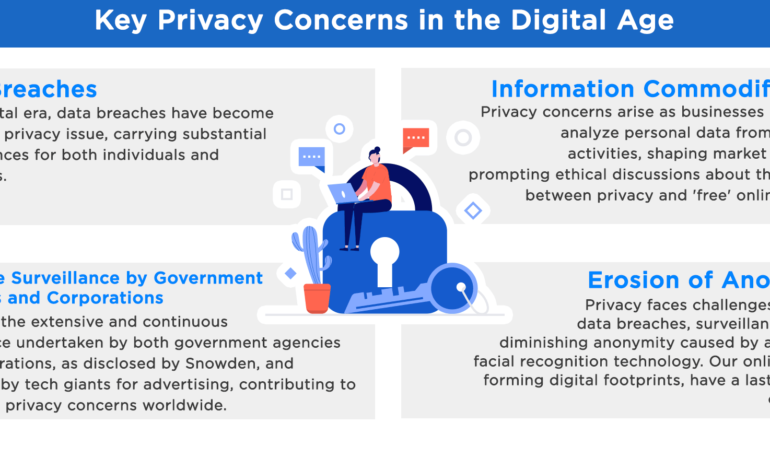The Digital Age’s Impact on Privacy: Tech Challenges and Solutions

The impact of technology on privacy in the digital age is a pressing issue that continues to shape our world. As we navigate an increasingly connected society, the line between personal data and free expression becomes increasingly blurred. This blog post delves into the evolution of technology and privacy, the challenges it poses, and potential solutions for safeguarding individual rights.
The Evolution of Technology and Privacy
Technology has evolved hand in hand with human history, transforming how we live, work, and interact. From early civilizations to the digital age, our understanding of privacy has adapted alongside technological advancements. In ancient societies, privacy was often tied to communal living spaces; people gathered together for shared experiences, and privacy was not a distinct concept.
By the 20th century, the idea of individual privacy began to take shape, driven by legal frameworks that protected personal space and seclusion. However, with the advent of the internet and digital technologies, our notion of privacy has been redefined. The rise of data-driven services has introduced new challenges, as personal information is collected, analyzed, and shared in ways that threaten individual autonomy.
Challenges to Privacy in the Digital Age
The digital age presents both opportunities and threats when it comes to privacy. While technology enables unprecedented levels of communication and connectivity, it also raises concerns about data breaches, surveillance, and loss of personal control. The rapid expansion of online services has led to an explosion in data collection, making individuals vulnerable to exploitation.
Modern technologies such as artificial intelligence, machine learning, and big data analytics have introduced new dimensions to privacy issues. These tools can analyze vast amounts of information to identify patterns, predict behaviors, and create personalized profiles. However, this level of granularity also raises ethical questions about consent, transparency, and accountability.

Solutions and Approaches
Addressing the challenges posed by technology requires a multifaceted approach that combines technological solutions with legal and ethical frameworks. Governments and organizations must work together to create regulations that protect personal data while allowing for innovation. Laws like the General Data Protection Regulation (GDPR) in Europe and the California Consumer Privacy Act (CCPA) provide foundational protections. These laws establish clear boundaries for how personal information can be used, ensuring that individuals retain control over their data.
Transparency is another critical factor. Users should have clear understanding of how their data is being collected, used, and shared. Technological solutions such as end-to-end encryption enable secure communication channels, protecting sensitive information from unauthorized access. Additionally, enhancing user education through awareness campaigns can empower individuals to make informed decisions about their digital footprints.
Conclusion
The relationship between technology and privacy is constantly evolving, with no clear boundaries in sight. As we continue to rely on digital technologies for convenience and efficiency, it becomes increasingly important to find a balance that respects our rights while embracing innovation. The challenges posed by technology demand thoughtful solutions that prioritize individual autonomy and protect personal data.
Addressing these issues requires collaboration among governments, organizations, and individuals. By working together to create robust regulations, fostering transparency, and promoting user awareness, we can navigate the complexities of the digital age with confidence. Ultimately, protecting privacy is not just a technical challenge; it is an ethical imperative that shapes how we interact with one another in a connected world.



